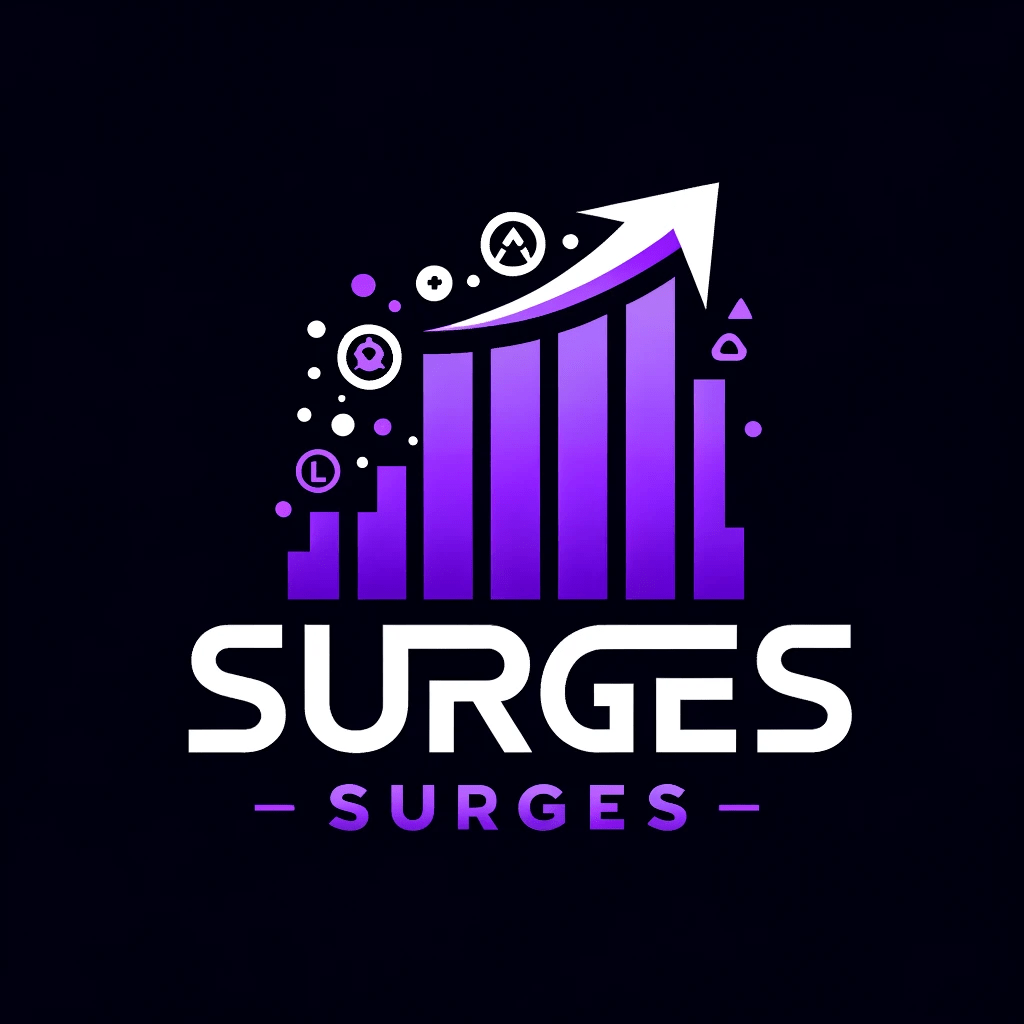Blog
By Nathan Ayala
•
June 28, 2024
Determining how long local SEO takes to deliver results is a common question among business owners. While some improvements can be seen within a few months, achieving significant progress typically takes longer. Factors such as the age and authority of your website, the competitiveness of your local market, the quality and quantity of your content, citations, and reviews, and the overall strength of your search engine optimization strategy play crucial roles in determining the timeline for local SEO success. Understanding Local SEO Local SEO involves optimizing your online presence to attract more business from relevant local searches. This includes optimizing your Google My Business listing, creating locally-focused content, and building local citations. Effective local SEO tactics ensure that your business appears in local search results when potential customers search for products or services in your area, especially if you are focusing on digital marketing in Apple Valley . In addition to traditional SEO strategies like keyword research, on-page optimization, and link building, local SEO emphasizes elements specific to local search, such as managing online reviews and maintaining accurate business information across various online directories. Factors Affecting Local SEO Results Several factors influence the speed and effectiveness of local SEO efforts: Website Age and Authority: Older, well-established websites with a strong backlink profile tend to rank faster compared to new sites. Local Market Competition: High competition in your industry and location can slow down the ranking process. Quality and Quantity of Content: Regularly updating your site with high-quality, relevant content helps improve your ranking. Local Citations and Reviews: Consistent and accurate business listings across various directories, along with positive customer reviews, enhance your local SEO efforts. Overall SEO Strategy: A comprehensive and well-executed SEO strategy, including technical SEO, content marketing, and user experience, is crucial for achieving and maintaining high rankings. Importance of Budget and Competition in Local SEO Investing in SEO can significantly impact the speed of achieving results. A larger budget allows for more resources, including advanced tools, professional expertise, and more extensive campaigns. For instance, a budget of $200 per month will yield modest results, while a $1,000 monthly budget can drive more significant and faster outcomes. The level of competition in your industry and locality also plays a vital role. In highly competitive markets, it may take longer to achieve noticeable improvements in rankings. Businesses in less competitive niches or locations can see quicker results. Setting Realistic Expectations for Organic Search Traffic When to Expect Increased Traffic Initial improvements in local search rankings can be observed within a few months. However, it typically takes six months or more to see significant progress, especially in competitive markets. A steady increase in organic traffic, leads, and conversions should be expected as your local SEO campaign matures. Typically, businesses working with an SEO agency notice a rise in phone calls and inquiries after three months, with more substantial spikes occurring between the fourth and sixth months. To help you visualize the progress of your SEO efforts over time, here's an interactive timeline:

By Nathan Ayala
•
June 22, 2024
Understanding Backlink Velocity and Search Engine Optimization Backlink Velocity and Its Role in SEO Backlink velocity refers to the rate at which a website acquires new backlinks. It’s a crucial factor in search engine optimization (SEO) because it helps search engines understand the growth and popularity of a site. Consistent, natural backlink growth can positively influence a website’s rankings, while sudden spikes can raise red flags, potentially leading to penalties. Understanding quality SEO metrics, including the quality of backlinks, is essential to avoid penalties from Google and maintain a high ranking. The Importance of Safe Backlink Acquisition Understanding how many backlinks per day is safe is crucial to avoid penalties and maintain a healthy website’s SEO. An unnatural increase in backlinks can trigger search engine algorithms to penalize a site for manipulative link-building practices. Therefore, a measured approach to acquiring backlinks is essential for long-term SEO success. Creating too many backlinks too quickly can lead to penalties from search engines, emphasizing the importance of natural, organic backlinking. The Importance of Natural Link Growth Why Natural Link Growth Matters Natural link growth is essential for search engine optimization. Search engines like Google prioritize websites with natural, organic link growth because it indicates that the content is valuable and relevant. In contrast, unnatural link growth often suggests manipulative practices that aim to deceive search engines. Avoiding Aggressive Link Building Strategies Avoiding aggressive link-building strategies is key to maintaining a healthy backlink profile. Such strategies can include purchasing links, participating in link schemes, or acquiring a large number of low-quality links in a short period. These tactics can lead to penalties and long-term damage to a site’s reputation and search rankings. Safe Backlink Limits Per Day No One-Size-Fits-All Answer There is no one-size-fits-all answer to how many backlinks per day is safe. The safe limit depends on various factors, including the website’s age, authority, and existing backlink profile. Each site is unique, and what might be safe for one could be risky for another. General Guidelines for New Websites For new websites, a moderate pace of 5-10 high-quality backlinks per day is generally considered safe. This allows for natural link growth and avoids raising red flags with search engines. New sites should focus on earning links from relevant, authoritative sources to build a strong foundation. Balanced Approach for Established Websites Established websites can handle a slightly faster pace of 10-15 high-quality backlinks per day. However, it’s essential to maintain a balanced approach and prioritize quality over quantity. Even for well-established sites, sudden spikes in backlink acquisition can be suspicious if not managed carefully. Factors Affecting Safe Backlink Velocity Assessing Your Site’s Current Link Profile Several factors influence the safe limit of backlinks per day, including the website’s current link profile, industry competitiveness, and link quality. Evaluating your website’s existing backlink profile is crucial. Use SEO tools like Ahrefs, SEMrush, or Moz to analyze your backlink profile, including metrics such as domain authority, link diversity, and historical link acquisition patterns. Google Search Console is a free tool that you can use for viewing and managing your website's backlinks. It provides detailed reports on the sites linking to yours, including the total number of links, the top linking domains, and the most linked pages on your site. By accessing the "Links" report, you can gain insights into your backlink profile, identify potential issues, and discover opportunities for improving your link-building strategy. This information helps ensure that your backlinks are of high quality and aligned with Google's guidelines, ultimately supporting your overall SEO efforts. Industry Competitiveness and Link Quality Industry competitiveness and link quality also impact the safe limit of backlinks per day. In highly competitive industries, the natural backlink growth rate may be higher, allowing for a slightly faster acquisition pace. However, always focus on building high-quality backlinks from authoritative sources to maintain a healthy backlink profile. Identifying Excessive Link Building Signs of Aggressive Link Building Excessive link building can lead to penalties and negatively impact search engine rankings. Signs of aggressive link building include sudden, drastic increases in backlinks per day, low-quality backlinks, spammy links, and unnatural link patterns. Monitoring your backlink profile regularly can help identify and address these issues before they lead to penalties. Prioritizing Quality in Link Building Prioritize quality over quantity when building backlinks. Focus on creating high-quality, relevant content that attracts natural backlinks. High-quality backlinks from authoritative sources are essential for search engine optimization. They increase your website’s credibility and authority, leading to improved search engine rankings. Conclusion and Additional Resources The Takeaway: Balancing Quality and Quantity There is no magic number of backlinks per day that is safe for every website. Prioritize quality, maintain a balanced approach, and monitor your backlink profile regularly to avoid penalties. Balancing quality and quantity when building backlinks is crucial to maintaining a healthy website’s SEO. Focus on creating high-quality content that attracts natural backlinks. Frequently Asked Questions About Link Building How many backlinks per day is safe for my website? The answer depends on various factors, including your website’s age, authority, and existing backlink profile. What is the best link building strategy? Focus on creating high-quality, relevant content that attracts natural backlinks. How can I avoid spammy links? Prioritize quality over quantity, and avoid using link schemes or buying backlinks. By adhering to these guidelines and continuously monitoring your backlink profile, you can ensure your link-building efforts are both safe and effective, contributing to sustained SEO growth.

By Nathan Ayala
•
June 11, 2024
What is SEO Forecasting? Definition and Importance of SEO Forecasting SEO forecasting uses data-backed techniques to predict the future organic performance of a website. By analyzing historical data, trends, and patterns, SEO forecasting helps businesses understand potential future traffic, conversions, and visibility. Accurate forecasting helps set realistic SEO goals and allocate resources efficiently, ensuring that efforts are aligned with expected outcomes and business objectives. Benefits of Accurate Forecasting for SEO Growth Accurate SEO forecasting provides several key benefits: Identifying Untapped Keyword Opportunities: By predicting future trends, businesses can identify keywords that are likely to grow in popularity and target them early, gaining a competitive advantage. Targeting Low-Competition Keywords: Forecasting helps uncover keywords with high potential but low competition, making it easier to rank higher and drive more organic traffic. Efficient Resource Allocation: Knowing where the best opportunities lie allows businesses to allocate their SEO resources more effectively, focusing on strategies that are likely to yield the highest returns. Setting Realistic Goals: By basing goals on data-driven forecasts, businesses can set achievable targets and avoid the frustration of unmet expectations. Analyzing and Predicting SEO Traffic: Accurate forecasting helps in analyzing historical data and predicting future SEO traffic, which can inform SEO strategies, marketing budgets, and revenue projections. Why SEO Forecasting Matters Setting Realistic SEO Goals and Expectations Forecasting helps set achievable targets based on past website performance and expected search trends. This process involves analyzing historical data, search engine rankings, and traffic patterns to project these trends into the future. By doing so, businesses can set realistic SEO goals that align with their overall marketing objectives and ensure that resources are used efficiently. Gaining a Competitive Advantage through SEO Forecasting Forecasting helps businesses capture traffic and visibility that competitors may be missing. By anticipating changes in search behavior and industry trends, businesses can stay ahead of the competition. Forecasting also provides insights into potential returns on SEO investments, helping businesses determine where to allocate resources for the highest impact. Understanding SEO Forecasting Challenges Algorithm Complexity and Data Variability Search algorithms are incredibly complex and constantly evolving. Google, for example, regularly updates its algorithm, which can significantly impact search rankings. Proper forecasting relies on multiple data channels, such as website analytics and keyword insights, to create a comprehensive picture. However, the variability of this data and the unpredictability of algorithm changes make accurate forecasting challenging. External Factors and User Behavior Impact on SEO Forecasting External factors such as economic conditions, industry trends, and regulatory changes can greatly impact SEO trend analysis. For instance, a sudden change in consumer behavior due to a new technology or a global event can disrupt previously stable search trends. Predicting how users will search and engage with content is highly uncertain, adding another layer of complexity to SEO forecasting. Can You Forecast SEO Growth? Understanding the Limitations of SEO Forecasting SEO forecasting is not an exact science and should be taken with a grain of salt. It is based on assumptions that the business climate, organic search behavior, and SEO performance will remain consistent. However, these factors are subject to change, which can impact the accuracy of forecasts. Therefore, while SEO forecasting is a valuable tool, it should be used in conjunction with other strategies and adjusted as new data becomes available. The Role of Historical Data and Keywords in Forecasting Historical data is used to predict future performance, including search volume and website traffic. By analyzing trends over time, businesses can make educated guesses about future performance. Keyword forecasting involves predicting the future search volume and competitiveness of keywords, helping businesses identify which keywords to target for the best potential returns. SEO Forecasting Methods Using Google Analytics for SEO Forecasting Google Analytics provides historical data about website performance, including organic traffic and search volume. By analyzing this data, businesses can identify trends and patterns in website traffic, which can be used to make informed forecasts about future performance. Key metrics to consider include: Organic traffic trends over time Bounce rate and user engagement metrics Conversion rates from organic traffic Leveraging Google Search Console for SEO Insights Google Search Console provides insights into website performance, including search volume and keyword rankings. It helps identify opportunities and threats in the digital landscape by providing data on: Keyword rankings and click-through rates (CTR) Search queries that drive traffic to the site Indexing issues and site performance Alternative SEO Forecasting Tools Various SEO forecasting tools are available, including SEOmonitor, Semrush, Ahrefs, and SE Ranking. These tools provide advanced algorithms and models for more accurate forecasts. They offer features like: Comprehensive keyword research and tracking Competitive analysis Backlink analysis Site audit and performance tracking Forecasting SEO Growth with Historical Data Collecting and Preparing Past Organic Traffic Data Collect past organic traffic data from Google Analytics and Search Console. Prepare a tabular summary of the monthly organic traffic for the past 12-24 months. This data will form the basis for your forecasts. Key steps include: Exporting traffic data from analytics tools Organizing data in a spreadsheet for easy analysis Identifying patterns and trends in the data Calculating Average Traffic Increment for SEO Growth Calculate the average percentage increase in organic traffic over the past few years. This involves: Summarizing monthly traffic data Calculating the month-over-month growth rate Averaging these growth rates to estimate future traffic increases Use this increment to forecast future organic traffic growth by applying the average growth rate to current traffic levels. Keyword Analysis for SEO Forecasting Calculating Organic Traffic Potential from Keywords Multiply the monthly search volume by the click-through rate (CTR) to determine the potential organic traffic. This involves: Identifying relevant keywords and their monthly search volume (MSV) Estimating the CTR based on current ranking positions Calculating the potential traffic by multiplying MSV by CTR Using Google Sheets or Excel for Keyword Ranking Analysis Input the keyword data into a spreadsheet tool like Google Sheets or Excel for analysis. Organize the data by keyword, monthly search volume (MSV), CTR, and calculate the estimated organic traffic for each keyword. This helps in visualizing and prioritizing keyword targets. Performing TAM Analysis for SEO Growth Estimating SEO Potential and Market Penetration Research how many individuals might use search engines to find fitness-related content or workout routines. Apply this percentage to your Total Addressable Market (TAM) to estimate the number of individuals using organic search for fitness information. Setting Realistic Growth Goals for SEO Determine what percentage of these potential organic search users you aim to attract to your platform through SEO efforts. For instance, you might aim for a conservative 1% market penetration in the first year. This involves: Defining the total potential audience Estimating achievable market penetration Setting specific, measurable growth targets Effective SEO Forecasting Strategies Integrating SEO Forecasting into Strategic Planning Use forecasting data to inform your digital marketing strategy and make more informed marketing decisions. This involves: Incorporating forecast data into marketing plans Aligning SEO efforts with broader business goals Regularly reviewing and adjusting strategies based on updated forecasts Best Practices for SEO Planning and Forecasting Foster a culture of data-driven decision-making within your team. Encourage the use of SEO forecasting and planning tools to ensure everyone is aligned and working towards the same objectives. Best practices include: Regularly updating forecasts based on new data Using multiple data sources for a comprehensive view Training team members on data analysis and interpretation Common SEO Forecasting Mistakes to Avoid Overcoming Challenges in Planning and Implementing SEO Forecasts Avoid relying solely on a single data source. Account for external factors such as seasonality, market trends, and Google algorithm updates. Regularly update your forecasts to reflect new insights and changes in the market. Common mistakes to avoid include: Ignoring external factors that impact SEO Failing to update forecasts regularly Overestimating the accuracy of forecasts SEO Forecasting for E-commerce Businesses The Impact of SEO Forecasting on E-commerce Growth SEO forecasting is particularly beneficial for e-commerce businesses. It allows companies to better align their product offerings and marketing strategies with consumer search behavior. By understanding potential traffic and demand, e-commerce businesses can: Optimize product listings for search visibility Plan inventory based on forecasted demand Develop targeted marketing campaigns to drive traffic and sales Conclusion The Importance of Continuous SEO Forecasting for Growth Continuous SEO forecasting is paramount to staying ahead in the highly competitive digital marketing landscape. Implementing a routine process for revising and updating SEO forecasts ensures that your digital marketing remains aligned with your business objectives and market dynamics. Regular updates allow for: Adapting to changes in search algorithms and user behavior Capitalizing on new opportunities as they arise Maintaining a competitive edge through proactive strategy adjustments
Located in
11921 Morning Star Rd, Apple Valley, CA 92308, United States of America
Contact us
contact@leadsurges.com
(760) 475-9158
